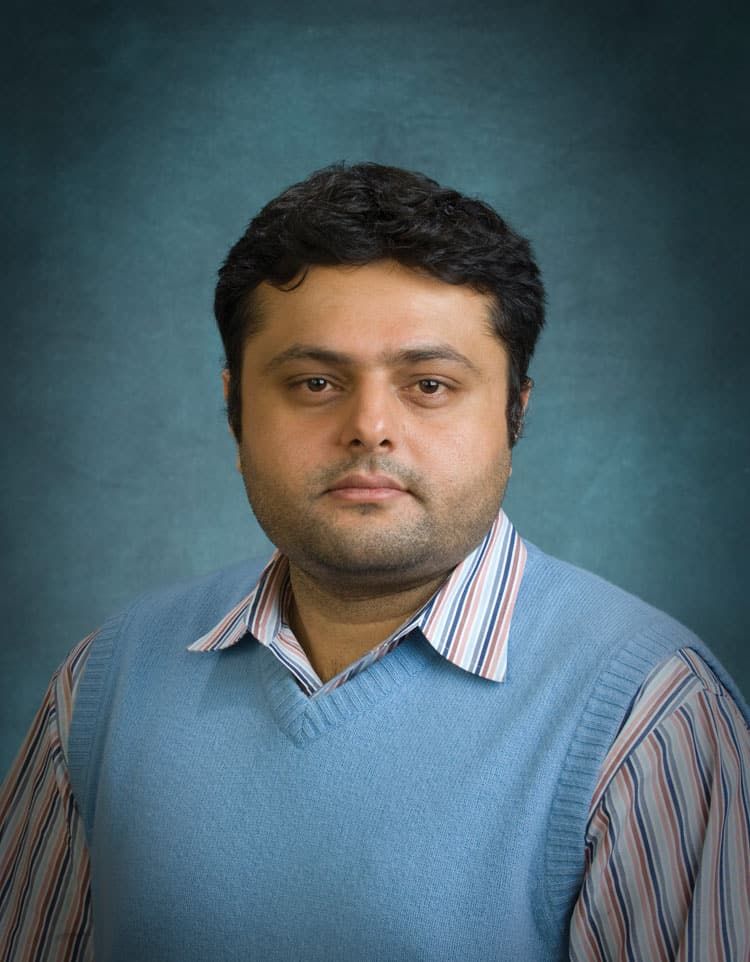CSU team eyes synthetics for replacement heart valves

Three researchers at Colorado State University are on a mission to fix a broken heart.
Led by Dr. Lakshmi Prasad Dasi, the research team is working to develop replacement heart valves with a synthetic material that would mimic the tissue composition of other organs in the body, minimizing negative side effects.
In August, Dasi received a $1.8 million grant from the National Institutes of Health to conduct a five-year study dedicated to researching synthetic heart valves and finding ways to prevent the problems that plague existing mechanical and bio-prosthetic replacement valves.
SPONSORED CONTENT
Electric Vehicle Revolution: Install EV Chargers Now or Lose Tenants Tomorrow
Ignoring the shift towards electric vehicles is risky. Mac Electric offers an EV charging feasibility study to answer commercial property owners' questions.
An estimated 70,000 to 80,000 heart valve replacement procedures are performed every year in the United States, according to Beth Israel Deaconess Medical Center of the Harvard Medical Teaching Hospital. More than 300,000 Americans suffer from heart valve deterioration.
According to Dasi, mechanical replacement heart valves require the patient to take anti-coagulation medication for the rest of their lives to prevent blood clotting. Tissue-based replacement valves, or bio-prosthetic valves, are replacements constructed from pig or cow tissue that can calcify over time and only last approximately 10 to 15 years.
“Neither one of these works well, so we are trying to develop a new class of heart valves made of new materials,” he said. “We’re working with plastic treated in a special way so the body does not see the replacement as a foreign body.”
Along with Susan James, head of the Department of Mechanical Engineering and an expert in polymer synthesis, and associate professor Ketul C. Popat, an expert in bio-compatibility, the research team is working to develop valves made from a synthetic, flexible material which contains hyaluronan, a molecule found in soft tissue. James received a proof-of-concept award for the material from the Colorado Office of Economic Development and International Trade.
In addition to working with the new material, Dasi said the team is also experimenting with a biological protein to coat the replacement valves. With the protein coat and the plasticity of the material, the idea is that replacement valves can be molded and personalized to each individual patient.
“We’re just beginning in that direction, though,” Dasi said. “We’re still verifying the functions and verifying that human blood in vitro is (compatible) with the novel materials.”
The experimentation process is done with human blood. The blood is placed on the materials and then monitored to observe clotting trends, specifically how the blood clots and at what speed, according to Popat.
“First we isolate the plasma, which is basically water,” he said. “We put the plasma on top of the material and look at how the platelets interact. We observe the shape of the platelets and compare the level of platelet activation on the developed materials to the level that occurs in the body. If platelets don’t activate in our body, there is a problem.”
As soon as Popat can get a satisfactory result of blood interaction with the material, he will examine how blood flows through the synthetic heart valve. The focus right now is on the material and blood relationship. Once established, the team will create an actual synthetic heart valve to be placed into animals.
“The flow system is important; blood doesn’t stay in one place,” Popat said. “We’re trying to design a system to look at how blood flows through heart valves and the dynamic interaction with the materials.”
Eventually, the research team will work with Dr. Christopher Orton, a veterinary cardiothoracic surgeon and head of the Department of Clinical Sciences in the College of Veterinary Medicine and Biomedical Sciences at CSU. Sometime over the next two years, the newly modeled valve prototypes will be implanted into pigs and juvenile sheep, said Dasi. The animals will be closely monitored to see that thrombosis and calcification does not occur, as can happen with current replacement valves. Heart testing in the animals will yield comparable results to human hearts; pig hearts reflect adult human hearts while juvenile sheep reflect hearts of children.
While the development process still is in the preliminary stages, Dasi and his team are striving for a breakthrough that would last a lifetime.
“Our attempt is not like the others,” he said. “What makes it different is that we’re camouflaging the synthetic materials in the body.”
Three researchers at Colorado State University are on a mission to fix a broken heart.
Led by Dr. Lakshmi Prasad Dasi, the research team is working to develop replacement heart valves with a synthetic material that would mimic the tissue composition of other organs in the body, minimizing negative side effects.
In August, Dasi received a $1.8 million grant from the National Institutes of Health to conduct a five-year study dedicated to researching synthetic heart valves and finding ways to prevent the problems that plague existing mechanical and bio-prosthetic replacement valves.
An estimated 70,000 to 80,000 heart valve replacement procedures are performed…
THIS ARTICLE IS FOR SUBSCRIBERS ONLY
Continue reading for less than $3 per week!
Get a month of award-winning local business news, trends and insights
Access award-winning content today!




